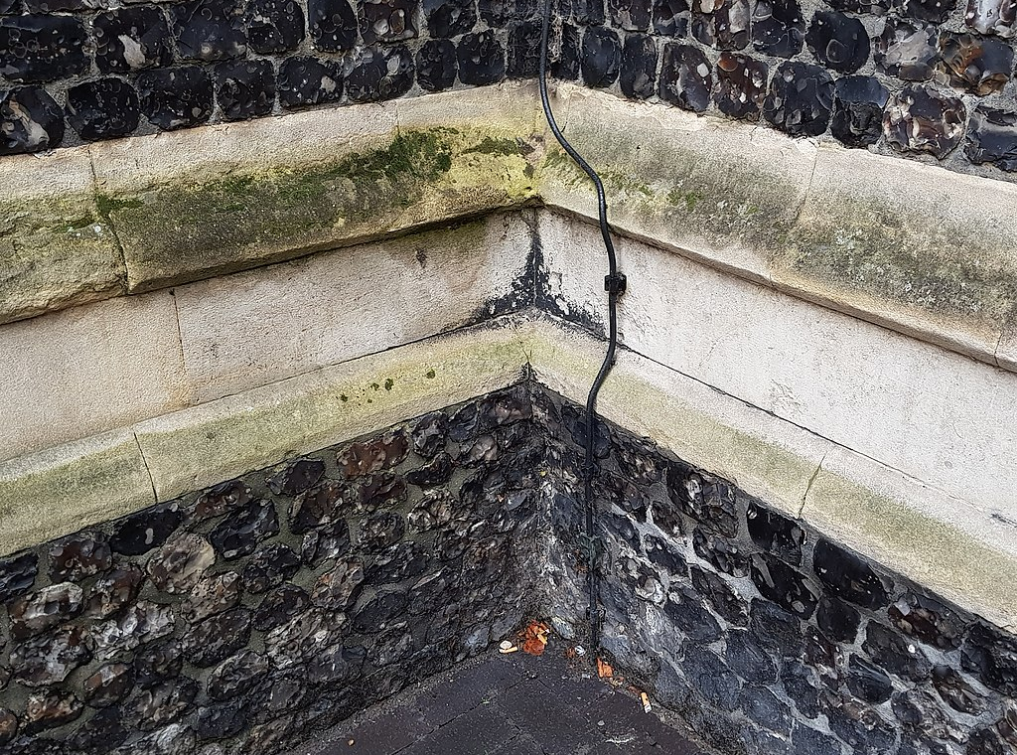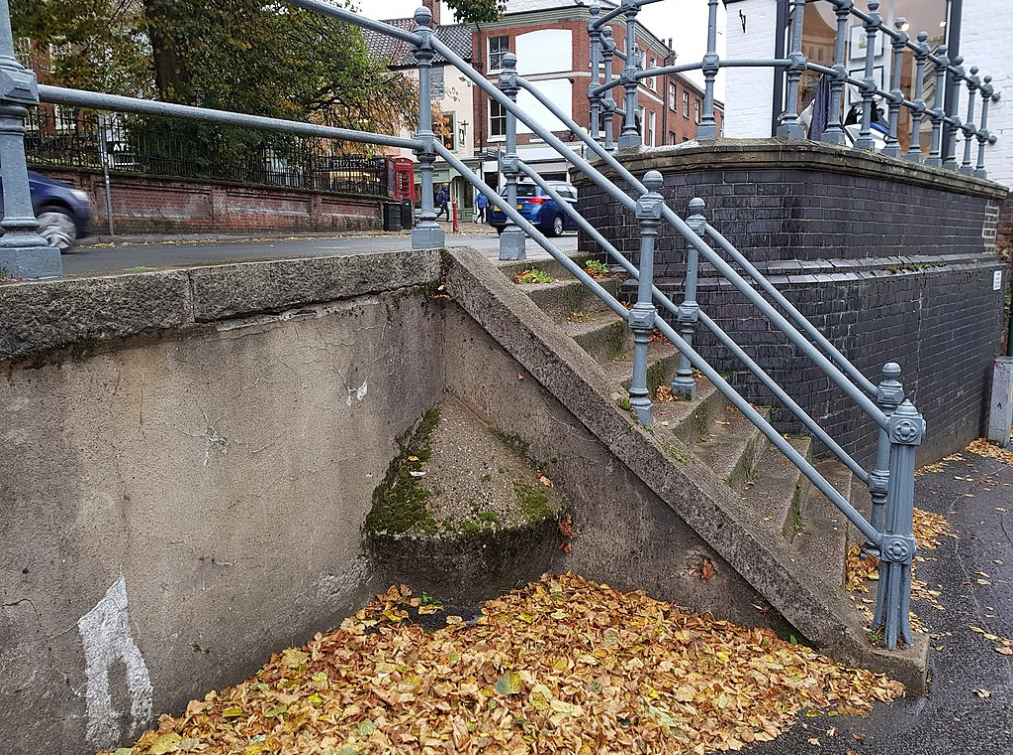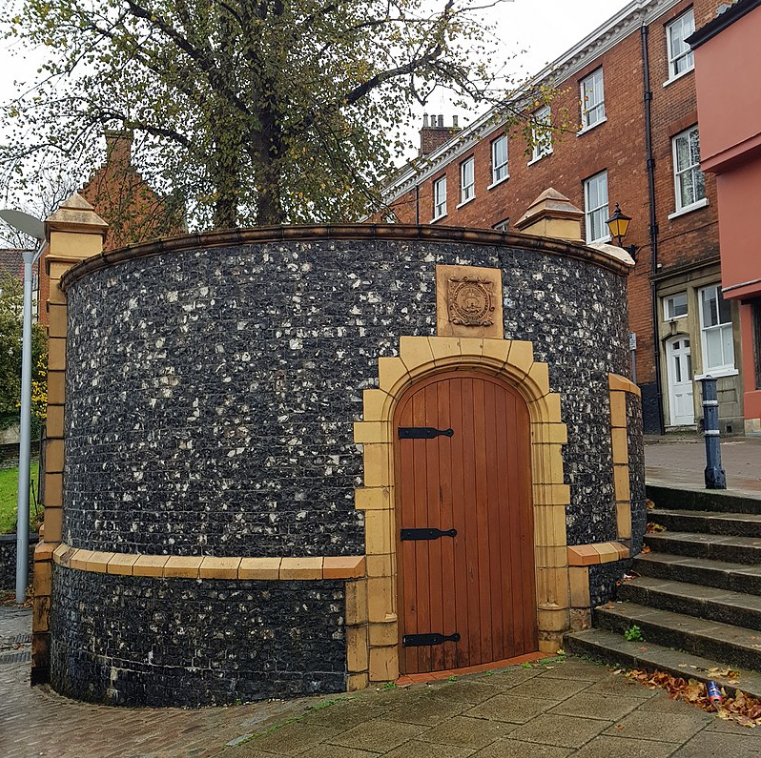
| Version | Summary | Created by | Modification | Content Size | Created at | Operation |
|---|---|---|---|---|---|---|
| 1 | Beatrix Zheng | -- | 1503 | 2022-09-28 01:30:48 |
Video Upload Options
Anti urination devices were a form of hostile architecture installed in Norwich and the surrounding area in the late 19th century to discourage public urination. The overcrowded and narrow streets of the city centre and a lack of public toilets led to men urinating against the side of buildings, but the installation of new public urinals to address the issue was delayed by disputes over where they were to be sited. Anti urination devices were built in places which suffered particular problems with public urination, and were intended to discourage men from urinating at that spot. Most were built of sloped or curved stone, flint or concrete, and were shaped such that anyone attempting to urinate against the wall would need to stand well away from the wall in public view, hopefully discouraging them from doing so. The slope of the structure meant that should anyone still attempt to urinate against it, the stream of urine would be deflected back onto their feet and legs. A few instead consisted of a spiked metal bar positioned across a corner at the height of a typical man's groin, and were intended to dissuade men from approaching the corner with their genitals exposed. Following improved public toilet provision from the 1890s onwards, the problems caused by the lack of urinals became less of an issue, and anti urination devices ceased to be installed. Although most metal examples were removed during the Second World War, and many others have been demolished in subsequent years, around 30 remain in place in central Norwich with further surviving examples in other parts of East Anglia.
1. Background
Norwich, the county town of Norfolk, was since the Anglo-Saxon era one of England's major trading cities.[1] By the early 14th century Norwich was considered the second city of England after London,[2] and was one of the largest and most prosperous cities in the country;[3] the relaxation of trade restrictions in the 17th century led to the city becoming a fashionable shopping destination.[4] The opening of Norwich railway station in 1844 led to a larger increase in the numbers of people visiting the city and in particular Norwich Market and the shops in the surrounding area.[5][6] With much of the land on and around the marketplace privately owned or owned by the city's many churches, the 19th century authorities were unable to rationalise or redesign the layout of the area to address the problems caused by crowding.[6]
By the mid 19th century, the numbers of large crowds visiting the area, coupled with a lack of public toilets, was causing concerns about public urination in the area.[7] Inspector W. Lee, reporting on Norwich for the General Board of Health in 1851, wrote of the "very offensive places" caused by men urinating in corners and in particular urinating in the passageways surrounding churchyards,[8] and the 1853 Paving, Cleaning, Sewerage and Lighting Committee reported on the "extensive use of urinal corners scattered about the city".[7]

Despite general agreement that the situation was problematic, and the Public Health Act 1875 creating a statutory duty for local authorities to address public hygiene issues, proposals to build public urinals were opposed by businesses and other organisations near the proposed urinal sites.[10] Those urinals which were built also led to problems, with local residents complaining about the smell from uncleaned urinals.[11][12]
2. Installation
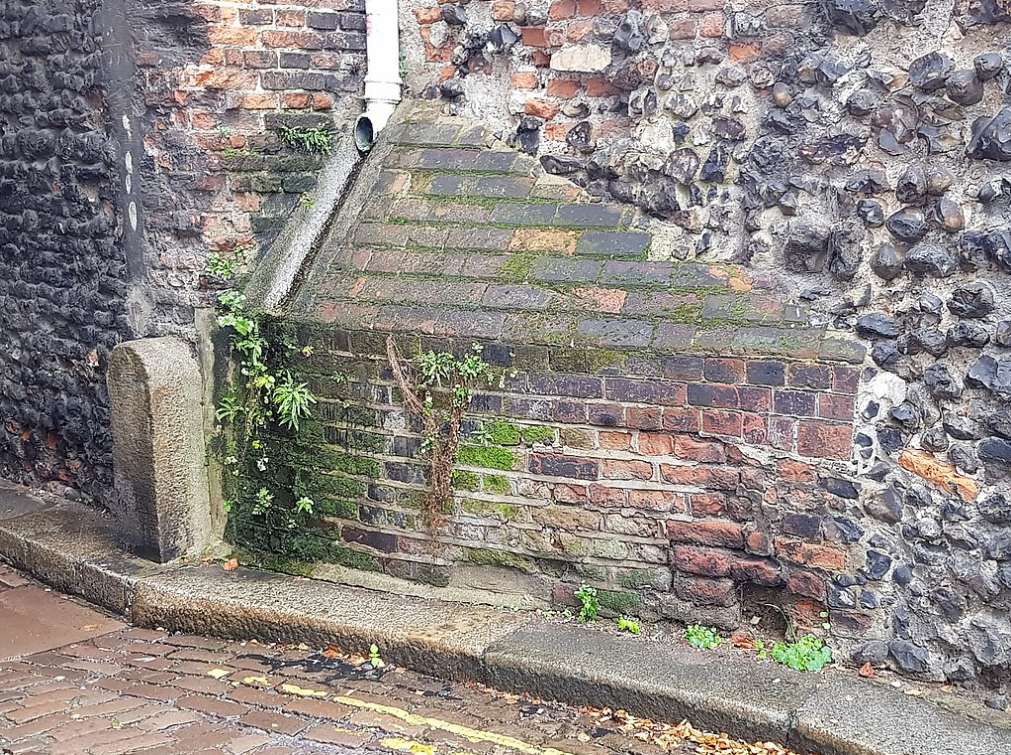
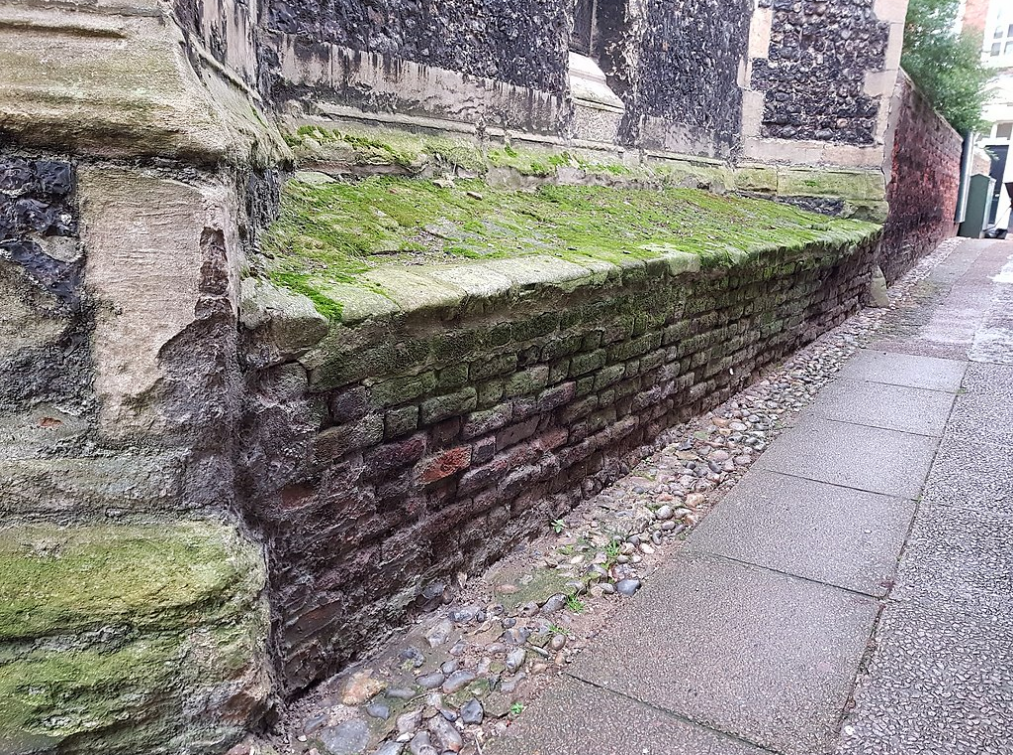
To address the problems caused by public urination and the lack of urinals, in the later 19th century the owners of buildings took to installing anti urination devices, architectural elements specifically intended to discourage public urination.[13] The records of the decisions to install anti urination devices are lost,[7] but they first appear on Ordnance Survey maps in 1885.[11][14]
The most common form of anti urination device was a solid structure with a rough, sloping surface. As well as forcing the man to stand back from the wall and at greater risk of being seen, the angle would cause any stream of urine to fall back on the urinator's feet and legs. Invariably built in alleyways, churchyards and other places somewhat hidden from public view,[13] this type of anti urination device was generally built in materials to match and blend in with surrounding structures.[15] Those anti urination devices built to protect churches were often built using high-quality flint, to blend in better with the traditional flintwork used for most medieval civic buildings in Norfolk.[16] A downspout would often be installed directly above them, to reduce the need for cleaning.[15]
Although some anti urination devices, particularly early examples, formed a smooth sloping surface, the most common design was that of a tapered cross-section of a cone, set into the corner of a building. This style is particularly often found on churches, where the sharp angles between external buttresses and the church walls created numerous dimly-lit corners, ideal for urination.
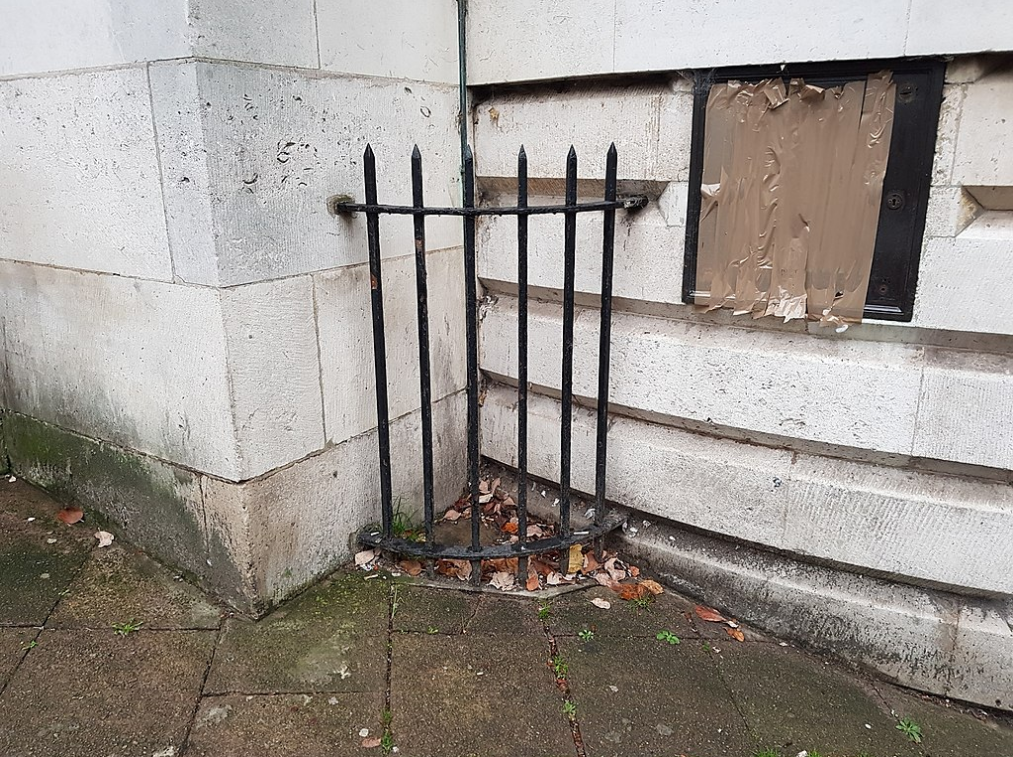
As well as the stone, brick or flint anti urination devices intended to deflect a stream of urine back upon its creator, some other anti urination devices consisted of a curved metal bar, studded with spikes and positioned at the height of a typical man's groin. Any man attempting to approach the corner or climb the bar would risk injuries to his genitals; consequently, it was hoped that men would be dissuaded from approaching these corners to urinate. Very few metal examples survive; it is likely that, as with many other metal railings throughout the UK, they were seized as scrap metal during the Second World War.[16]
3. Improved Public Toilet Provision
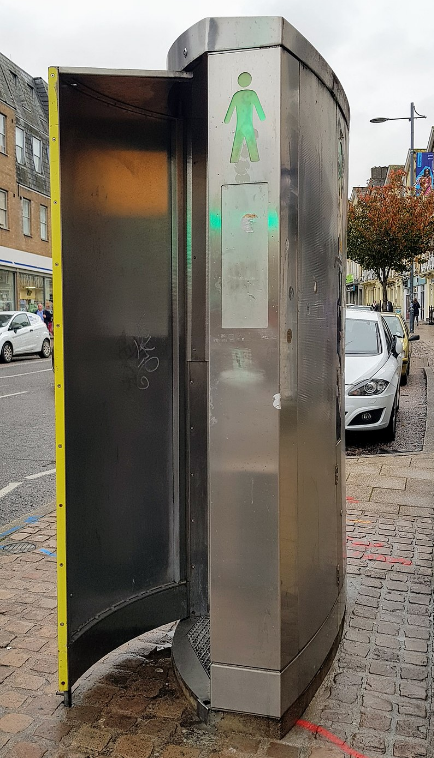
Despite public objections, from the 1890s onwards public toilets became more common in central Norwich, leading to public urination ceasing to be a major issue. Built to elaborate designs to assuage public concerns about their intrusiveness, many are architecturally noteworthy, and one 1919 public urinal in St. Crispin's Road is a listed building in its own right.[18][19] From the 1980s onwards, with improved provision of toilets in shops, pubs and shopping centres, many of these earlier public toilets in their turn fell into disrepair and were closed down.[11]
It is not recorded how many anti urination devices were built in total.[7] Many of them were built to address a specific issue and either subsequently deteriorated or were removed, and many more were destroyed in the 1930s and 1960s redevelopment of parts of the city centre, or destroyed during the Second World War.[20] (As of 2016) approximately 30 were recorded in central Norwich, with a few other examples scattered throughout other parts of East Anglia.[21]
Public urination continues to be a problem in parts of Norwich. The rear of St Gregory's Church is still commonly used for public urination (the front remains protected by its large flint anti urination device).[17] In 2005 there was a sharp increase in the problem of people urinating through letter boxes in the city centre, particularly in the vicinity of Prince of Wales Road,[22] while there have been sustained issues with people urinating in gardens in the area.[23]
4. Footnotes
- ↑ "Nuisance" was a commonly-accepted euphemism for public urination.[17]
- ↑ The 19th-century debate revolved almost exclusively around the provision of public toilets for men, although in 1894 the provision of a public toilet for women in Chapelfield Gardens]] was discussed.[11]
- ↑ The anti urination devices appearing on the 1885 Ordnance Survey map are those at St Ethelbert's Gate, St George's Church, St Helen's Church and St Andrew's Church.[7]
- ↑ The St Crispin's Road urinal is believed to be Britain's oldest surviving concrete urinal.[18]
- ↑ As well as in Norwich, anti urination devices have been documented in Bungay,[15] Diss,[24] Ely,[25] Great Yarmouth,[15] Halesworth,[26] North Walsham,[27] Swaffham,[25] Thetford,[27] Wells-next-the-Sea,[27] and Wymondham.[28]
References
- Priestley 1987, p. 7.
- Kelly 2006, p. 218.
- Priestley 1987, p. 9.
- Priestley 1987, p. 17.
- Adderson & Kenworthy 1998, unnumbered, 3rd page of text.
- Priestley 1987, p. 27.
- Loveday 2016, p. 9.
- Loveday 2016, pp. 9–10.
- "Nuisance" was a commonly-accepted euphemism for public urination.[9]
- Loveday 2016, p. 10.
- Loveday 2016, p. 11.
- The 19th-century debate revolved almost exclusively around the provision of public toilets for men, although in 1894 the provision of a public toilet for women in Chapelfield Gardens]] was discussed.[11]
- Loveday 2016, p. 1.
- The anti urination devices appearing on the 1885 Ordnance Survey map are those at St Ethelbert's Gate, St George's Church, St Helen's Church and St Andrew's Church.[7]
- Loveday 2016, p. 3.
- Loveday 2016, p. 2.
- Loveday 2016, p. 28.
- Historic England. "Gentlemens Urinal, St Crispin Road (1119668)". National Heritage List for England. https://HistoricEngland.org.uk/listing/the-list/list-entry/1119668.
- The St Crispin's Road urinal is believed to be Britain's oldest surviving concrete urinal.[15]
- Loveday 2016, pp. 1–2.
- As well as in Norwich, anti urination devices have been documented in Bungay,[13] Diss,[17] Ely,[18] Great Yarmouth,[13] Halesworth,[19] North Walsham,[20] Swaffham,[18] Thetford,[20] Wells-next-the-Sea,[20] and Wymondham.[21]
- "Police fine for street urination". BBC News. London: BBC Online. 13 May 2005. http://news.bbc.co.uk/1/hi/england/norfolk/4543737.stm. Retrieved 20 December 2017.
- Grimmer, Dan (8 September 2014). "Police’s experiment to tackle night-time trouble in Norwich". Eastern Daily Press (Norwich). http://www.edp24.co.uk/news/politics/police-s-experiment-to-tackle-night-time-trouble-in-norwich-1-3760920. Retrieved 20 December 2017.
- Loveday 2016, p. 5.
- Loveday 2016, p. 6.
- Loveday 2016, p. 8.
- Loveday 2016, p. 7.
- Loveday 2016, p. 4.


